Calix XGS-PON is poised to attract attention because it self-promises the solutions offered, regardless of whether the target area is urban or rural. With such expeditiously advancing reliance on the internet, it is critical to developing new technology that XGS-PON readily provides and can offer up to 10-gigabit symmetrical upload and download speeds. Technological advancements improve customer satisfaction and enable businesses, educational facilities, and service providers to utilize applications that require heavy data transfer. This blog will present various aspects of the technology that is Calix XGS-PON, the ins and outs of the installation process, and what the future holds potential-wise for this type of technology in our aim of enhancing connectivity.
What is XGS-PON and How Does it Transform Calix Networks?
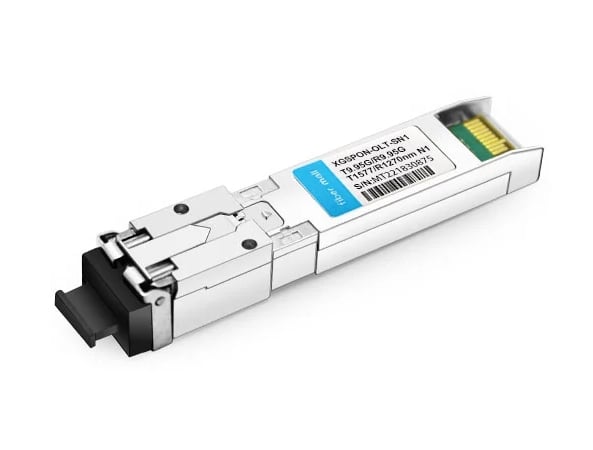
XGS-PON is an upgraded fiber-optic technology that offers supportive enhancement to the performance of a network by delivering high-speed internet without any asymmetry. In this advanced technology, upstream and downstream data channels are assigned the same bandwidth, making video or voice conference, cloud, and real working environments user-friendly. In the case of Calix Networks, XGS-PON integration redefines the infrastructure and facilitates better resource management and scalability. This also makes it possible for Calix to take a prime position in telecommunications, for it provides relevant solutions consistent with the dynamics of the market ecology about the required standards of bandwidth and dependability.
Understanding XGS-PON and Its Advantages
XGS-PON has several technical features that recommend its use as the most suitable option for the recent global changes in network architecture. The first is its capability to enable high-density networks over already existing fiber, which minimizes deployment costs and time. Further, the characteristic symmetric bandwidth ensures performance parity for uploads and downloads, essential for teleworking and cloud-enabled applications. This technology is also engineered to be more tolerant of faults and have better resilience, thus ensuring that services are available during peak use or harsh circumstances. Further, the design of XGS-PON is energy efficient and thus assists in achieving sustainability targets by reducing emissions while still enhancing performance. All in all, networks are transformed by XGS-PON as they increase cost-effective, reliable, high-speed connectivity, which meets today’s and tomorrow’s digital network requirements.
How XGS-PON Enhances Calix Optical Performance
XGS-PON raises Calix’s optical performance by enabling higher volume and less time for data transactions in fiber optic networks. Because of this increased capacity, Calix will be able to accommodate high-density connections, which are required to cater to the vast and growing audience of today’s network applications such as HD video on demand and interactive web-based services. The technology’s capability of delivering several wavelengths within the same fiber filament simultaneously improves the network’s volume, thus increasing its compatibility with any existing infrastructure. This means Calix can provide faster and more dependable connections with less extensive hardware upgrades, which directly improve optical performance. Furthermore, the constant level of XGS-PON’s high-performance contribution to the signal management feature provisioned low signal cross-talk and higher signal quality, which also improved the performance of Calix networks.
The Role of XGS-PON in Modern Optical Network Solutions
XGS-PON is an indispensable technology that allows the evolution of optical networks, giving a solid foundation and coping with the growing need for fast internet access. This technology can provide a symmetrical bandwidth of up to 10 Gbps, which fully addresses the needs of upstream and downstream data links’ bandwidth and efficiently supports heavy applications like cloud and VR. The technology also allows for a higher subscriber-to-infrastructure ratio, critical in areas with slow but steady growth in broadband subscriptions. XGS-PON can also co-exist with her older legacy implementations and thus brings integrations and upgrades for the confused end-users quickly and cheaply. This allows operators to improve their networks step-by-step without major interventions, preparing them for new networking tasks and future innovations.
How Does XGS-PON Improve Optical Network Efficiency?
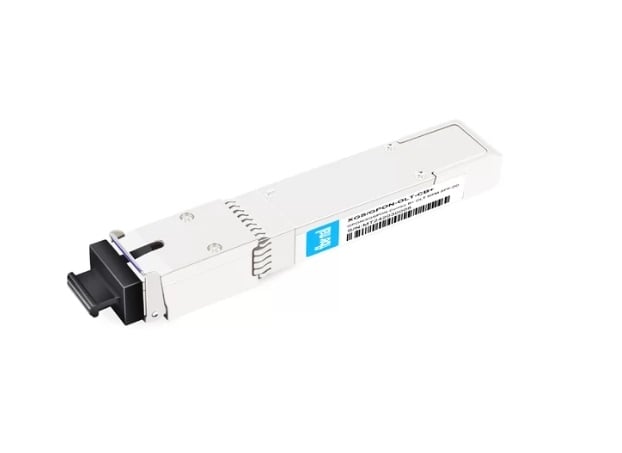
The Impact of 10G Technology in XGS-PON
The deployment of XGS-PON 10G technology allows transmissions of optical networks to be efficient and cost-effective since the networks provide high-capacity resources that can meet numerous applications and where there are heavy bandwidth demands. Thanks to the 10G integration, upload and download speeds are now symmetrical, making it the solution for significant data traffic. This is a considerable requirement today owing to the dominance of cloud services and high-definition video streaming. 10G technology also ensures high bandwidth, low latency, and reliable data links, essential for real-time applications. Moreover, this technology also offers a higher scalability, which allows network operators to serve more subscribers without degrading performance, which is one of the requirements of future networks and technologies.
Integrating XGS-PON with Existing Calix Systems
Integrating XGS-PON within Calix’s existing systems is very effective and allows the fullest use of advanced technology and optical networks. This seamlessly integrates systems and makes it possible for providers to enhance their network’s capabilities without the disruption of migration processes. With XGS-PON, Providers can offer increased bandwidth required for ultra-high definition streaming and extensive cloud applications, which are essential in this modern digital age. Also, this combined application enables the unification of hundreds of different traffic types into a single architecture, minimizing management effort and costs. All these benefits allow for achieving a higher level of customer satisfaction by providing a fast, large volume of high-quality digital output and being able to change according to the users’ expectations.
Optimizing Bandwidth for Better Subscriber Experience
Network management strategies can be employed to enhance subscribers’ experience, including optimizing bandwidth. First, advanced traffic management systems can prioritize critical services so that these applications can obtain as much bandwidth as is required for practical usage. Second, using adaptive bitrate streaming for video content allows for changes to be made on the fly to the bandwidth required to maintain a certain quality level without causing much buffering. Furthermore, with the. Use of Quality of Service (QoS) protocols, data flows can be managed so that applications requiring high bandwidth, such as VoIP and video conferencing, are treated with a higher priority. This combination effectively enhances the network’s efficiency and reliability in that subscribers can receive high-quality service throughout.
Why is Calix XGS-PON Essential for Broadband Service Providers?
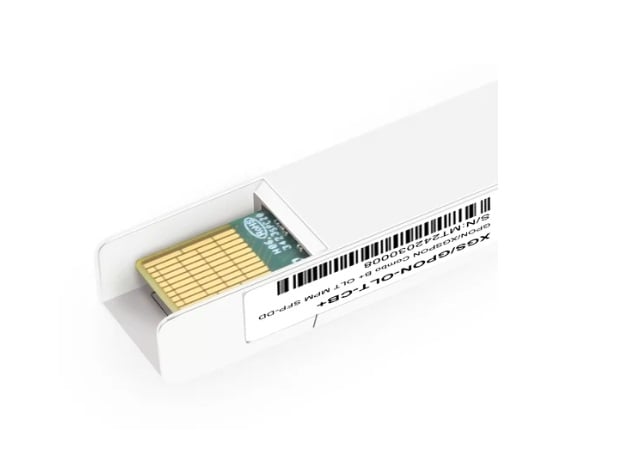
Advantages of Deploying XGS-PON with Calix Solutions
For broadband service providers looking to remain relevant in a data-driven world, deploying XGS-PON with Calix solutions offers several benefits, specifically installing single fiber transceivers. First, it provides symmetric 10 Gbps speeds, which considerably boosts broadband capabilities that meet the demands of the current high-speed internet, which is crucial for supporting the increasing UHD streaming along with cloud applications. Then, XGS-PON appears to be clearly focused on enabling the expansion of the GPON framework, providing a viable and sensible upgrade option that avoids unnecessary interruptions. Lastly, the network is also very well equipped with Calix solutions that enhance network management and improve the efficiency of the service and trustworthiness, allowing service providers to ensure a high quality of service while coping with the growth and variability required by future progress. Such advantages emphasize the importance of adopting XGS-PON to meet and surpass customer expectations in today’s digital era, especially with the benefits of OEM-compliant devices.
Meeting Broadband Demands with XGS-PON Technology
XGS-PON technology today is leading in the broadband development trend and providing a good answer to the increasing demand. XGS-PON technology is known for its symmetrical 10 Gbps speed, which makes it highly suitable for heavy data usage, such as streaming high-definition visuals and online gaming. Its capability to coexist with undertaken GPON deployments enables service providers to expand their networks efficiently by reducing expenses and downtimes for Calix-compatible solutions. In addition, XGS-PON’s new technologies give them a larger bandwidth, making the network more scalable for future use as the number of smart devices increases. These combined benefits make XGS-PON technology an important technology for broadband today and tomorrow to achieve excellent performance and customer satisfaction.
Future-Proofing Networks with XGS-PON Innovations
To ensure perfection in the future, XGS-PON transformations are necessary as companies are constantly advancing in different areas of technology and consumer needs. Currently, the leading providers go XGS-PON’s advanced symmetrical 10 Gbps bandwidth and are positioned to support new multimedia services, including 4K video, telemedicine, or interactive judicious and VRs. These are supported by the relevant ease-of-use characteristics of living with a smooth extension from the operational GPON properties, which are hard to maintain. Moreover, the expanding bandwidth and strength of the XGS-PON network also allow the increasing number of connected devices, which appropriately address the bandwidth expansion problems of the future. So finally, the XGS-PON makes sure that the networks will not only be built in time to sustain the user’s activities fully but also that homework is done to ensure the use of new technologies in the wavelengths.
What Are the Key Components of a Calix XGS-PON Setup?
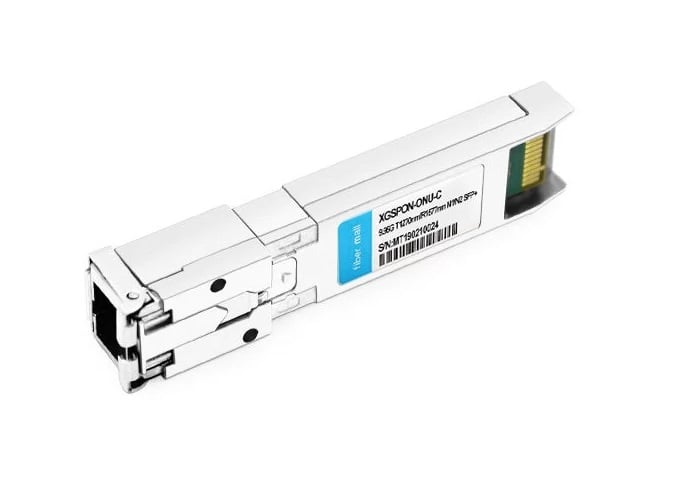
The Importance of Optical Transceivers in XGS-PON
The XGS-PON architecture consists of optical transceivers that transform electrical signals into optical signals and optical signals into electrical signals. Such devices help achieve high-speed and dependable data communication over fiber optic cables. As per authoritative sources, optical transceivers make it possible to transfer data quickly over long distances in XGS-PON systems. They are optimized to use bandwidth effectively so that data traffic will spread over many endpoints seamlessly. In addition, they are integral to the adaptability of the network, being capable of different configurations and expansion, which is essential for future requirements. Optical transceivers improve signal integrity and transmission quality; thus, the effectiveness and efficiency of XGS-PON networks are enhanced.
Choosing the Right SFP for Your Network Needs
It is of utmost importance to get the right SFP (Small Form-factor Pluggable) module so that network performance is not compromised and coexists well with the existing XGS-PON system. As one intends to choose the preferable SFP for his use, he should consider the transmission distance, data rate scalability, and the environmental networks. The overlapping data rate and distances the SFP is designed for must be confirmed during the network design phase, whether one is in a data center or telecommunications contraction. In addition, temperature ranges and other factors that affect the SFP’s reliability should also be considered since all SFPs have specific operational environments. Last but not least, SFPs are best acquired from reputable companies as those can offer better technical support and quality control. Within the ecosystem of the XGS-PON system, correct SFP modules are crucial for excellent network performance, enabling resilient data transmission throughout the network.
Understanding OLT Compatibility and Deployment
Along with OLT deployment considerations, looking for the compatibility of selected OLT with your network requirements is necessary. If it were up to me, I would first check whether the OLT fits the required data rates and has sufficient port density to cope with current and future traffic. It is also necessary to consider the compatibility with my existing ONU devices, as this will prevent integration and interoperability challenges. Furthermore, I would think the device’s power consumption and management capabilities are essential in reducing operational costs and enhancing efficiency. From the analysis of the OLTs installed at best-performing resources, I have come to understand that focusing on just the expenses needed to install the devices is erroneous and must be accompanied by the anticipated operational costs.
How to Deploy XGS-PON for Optimal Performance?
Steps for Successful XGS-PON Deployment
The deployment of XGS-PON architecture can be enhanced by following these practical suggestions obtained from reputable sources in the field:
- Network Planning and Design: After analyzing the network’s existing and future demands, the need to increase bandwidths, subscriber base, and service reach must be considered. Good planning ensures that costs and future expansion are sustainable.
- Infrastructure Assessment: Assess the existing infrastructure and determine whether it has the potential for XGS-PON technology. Check the status and capacity of the optical fiber routes and other existing hardware.
- Selecting Appropriate Equipment: Choose OLTs and ONUs machines that meet the network’s particular technical requirements, such as XGS-PON. Strive to achieve compatibility and measure the required data rates and capabilities for increasing users.
- Testing and Validation: Before launching the network, one must conduct all the configuration testing and fix the problems. This should include stress testing, qualitative signal evaluation, and network network assessment for several devices.
- Efficient Deployment Strategy: To increase the volume of deployment, it is prudent to use a phased deployment strategy. This minimizes the disruption risk and allows for real-time monitoring of activities.
- Continuous Monitoring and Improvement: Once the framework has been implemented, do not wait long before monitoring the network’s performance and addressing challenges. Use analytics and performance metrics to improve the quality of service rendered to customers continuously.
These steps guarantee that the XGS-PON network will be efficiently rolled out and support robust, very high-speed connectivity that meets current trends.
Common Challenges and Solutions in XGS-PON Implementations
There are certain common challenges that can be faced when deploying the XGS-PON networks. One of the most common could be the compatibility between newer XGS-PON devices and the existing network setup. Upgrades or replacements of legacy systems are expensive and may add operational complexities. Effective traffic management for raised volumes of data could also be another problem. With the emergence of XGS-PON technology, bandwidths are higher, which means traffic management will have to be adequate; otherwise, the service will be affected. There is also a lack of skilled personnel who are required for the installation and maintenance of NG-PON2 systems in certain areas. Some possible solutions include performing detailed surveys of the networks before deploying them, putting in place reasonable training of the staff, and using sophisticated management solutions of the networks to cater to the increasing loads. If these barriers are resolved, service providers will be able to deploy XGS-PON in an effective, timely, and cost-efficient manner.
Best Practices for Calix Access Network Integration
The deployment of Calix systems into the networks should be done systematically to guarantee interoperability and improved performance, especially where Calix-compatible equipment is deployed. The first step is to perform site surveys for integration to understand the installed assets and the challenges that may arise. This step is essential for planning improvements. Secondly, it is helpful to utilize the Calix Support Cloud or other platforms that are logged into to avoid mundane tasks and influential connections. These tools enable easy monitoring of the network and quick resolution of problems. Last but not least, all engineers who cut over to Calix networks should be trained in its technologies. This will support efficiency in operations and service delivery, as personnel will be trained keenly on the latest features, including best practices and ideas like XGS-PON technology. Proper application of the above practices will assist network operators to fully exploit the capabilities of Calix access networks to provide high speed and reliable internet connectivity.
Reference Sources
Frequently Asked Questions (FAQs)
Q: What is XGS-PON, and what are the salient features that differentiate it from GPON?
A: XGS-PON is the acronyms for XG-PON; and its full name is ‘10 Gigabit Symmetrical Passive Optical Network’ and is a new framework with a distinct feature of transmitting up to 10 Gb/s over unidirectional fiber. In comparison, GPON networks exhibit a two-way transmission, with indications of 2.5 Gbps prevalent downstream and 1.25 Gbps upstream. Expanded use of XGS PON guarantees a robust architecture that is always capable and suitable for business and residential use.
Q: What are the gained advantages of Calix XGS-PON for broader service providers BSPs?
A: Our core network adopts Calix XGS-PON and a common fiber for GPON and XGS-PON services. This has multiple advantages for BSPs, including advanced bandwidth capacity, enhancement for favored network elements, and new services for VoIP or IPTV. As operational costs reduce, the complexity of network operations will be significantly diminished, as 10G services will enable pure transitions with no further complicated service exclusions.
Q: How is Calix XGS-PON integrated into the network infrastructure for intelligent access deployment?
A: Integration with the AXOS platform made integrating higher-layer services with Calix XGS PON possible. This presented network operators with tools for analyzing and visualizing their deployment, allowing for efficient network management, quick resolutions for common problems, and enhanced subscriber experiences through personalized services.
Q: Can existing GPON infrastructure be utilized alongside Calix XGS-PON solutions?
A: Calix XGS-PON solutions are built to be co-located on the same fiber as GPON networks. This facilitates a gradual changeover to 10G PON technology without needing a complete infrastructure overhaul, thus making the upgrade for telecommunications providers and BSPs less complicated.
Q: What is the farthest possible distance the Calix XGS-PON technology can reach?
A: In practice, Calix XGS-PON technology has a maximum reach of 20km, although it may vary on a case-to-case basis depending on the deployment and specified equipment. This ability makes it useful in numerous scenarios, such as FTTH (Fiber to the Home) and enterprises.
Q: Does Calix XGS-PON equipment have any OEM affiliate options?
A: Yes, Calix XGS-PON equipment has OEM—-affiliate options that include XGS-PON SFP transceivers and other components expected to be compatible with calix’s E7 and E9 platforms, making network deployments more versatile and lower possible costs.
Q: How does the Calix XGS-PON compare to cable modem broadband technologies?
A: Calix XGS-PON certainly outperforms almost all cable modem broadband technologies. Because of its passive optical components, this technology enables symmetrical 10 Gbps speeds, low latency, and greater dependability. XGS-PON can also go substantially longer ranges and experience lower electromagnetic interference than cable systems, providing a better alternative for upstreaming the network’s speed.
Q: What temperature ranges are valid when using Calix XGS-PON equipment?
A: There are two types of Calix XGS-PON equipment commercially available today: C-temp and I-temp. Typical C-temp devices can only operate within 0°C to 70°C, while I-temp devices can operate in very extreme ranges, usually between -40°C and 85°C. This ensures that Calix XGS-PON solutions can be used in diverse environmental conditions.
Related Products:
-
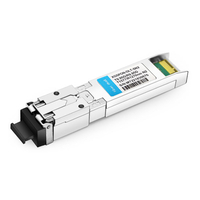 Calix 100-05524 Compatible 10G XGSPON OLT SFP+ TX-9.95G/RX-9.95G, 2.488G Tx-1577nm/Rx-1270nm SN2 SC UPC DDM Optical Transceivers
$315.00
Calix 100-05524 Compatible 10G XGSPON OLT SFP+ TX-9.95G/RX-9.95G, 2.488G Tx-1577nm/Rx-1270nm SN2 SC UPC DDM Optical Transceivers
$315.00
-
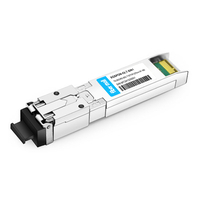 Calix 100-05642 Compatible 10G XGSPON OLT SFP+ TX-9.95G/RX-9.95G, 2.488G Tx-1577nm/Rx-1270nm SN1 SC UPC DDM Industrial Optical Transceivers
$360.00
Calix 100-05642 Compatible 10G XGSPON OLT SFP+ TX-9.95G/RX-9.95G, 2.488G Tx-1577nm/Rx-1270nm SN1 SC UPC DDM Industrial Optical Transceivers
$360.00
-
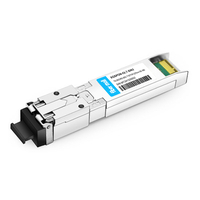 Calix 100-05583 Compatible 10G XGSPON OLT SFP+ TX-9.95G/RX-9.95G, 2.488G Tx-1577nm/Rx-1270nm SN2 SC UPC DDM Industrial Optical Transceivers
$380.00
Calix 100-05583 Compatible 10G XGSPON OLT SFP+ TX-9.95G/RX-9.95G, 2.488G Tx-1577nm/Rx-1270nm SN2 SC UPC DDM Industrial Optical Transceivers
$380.00
